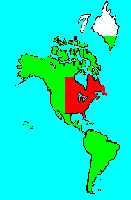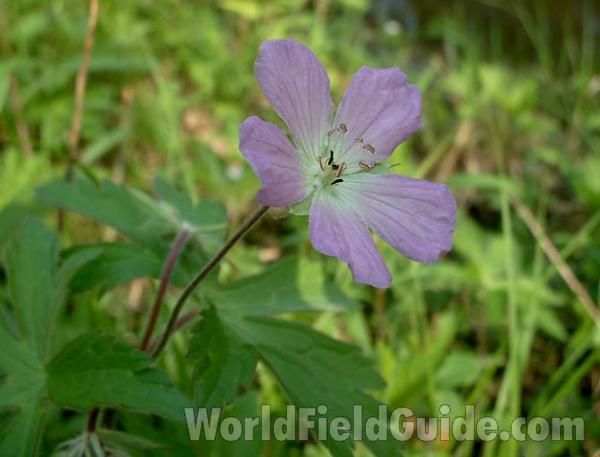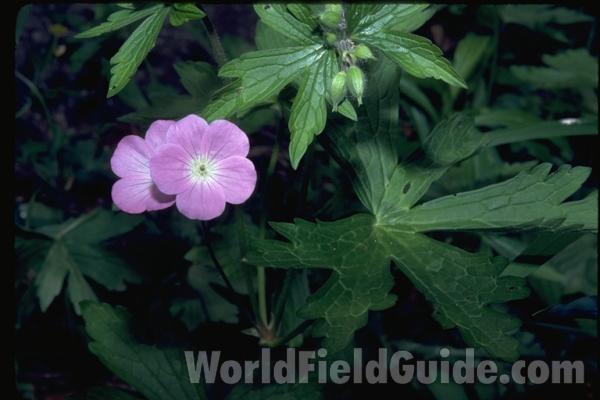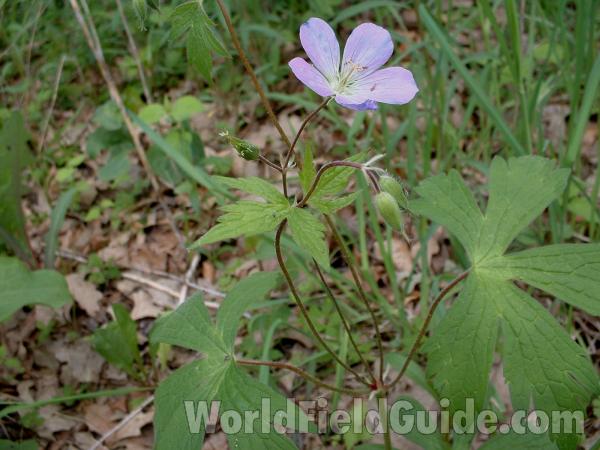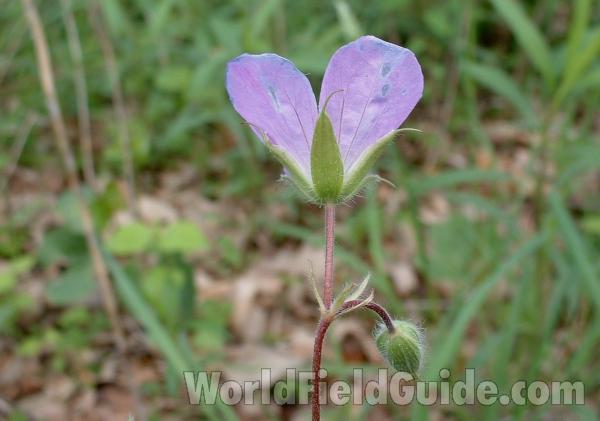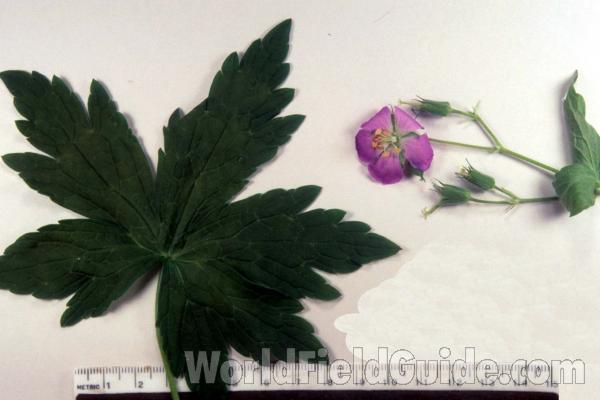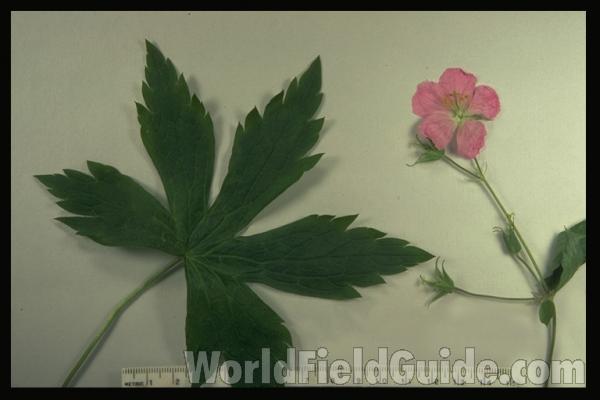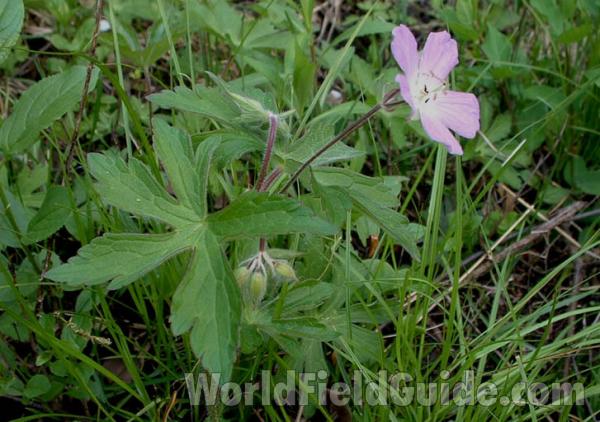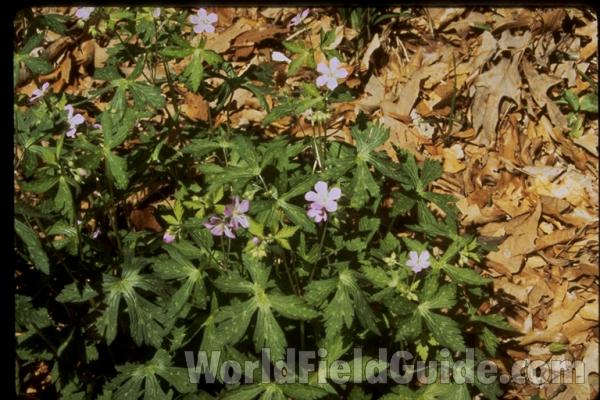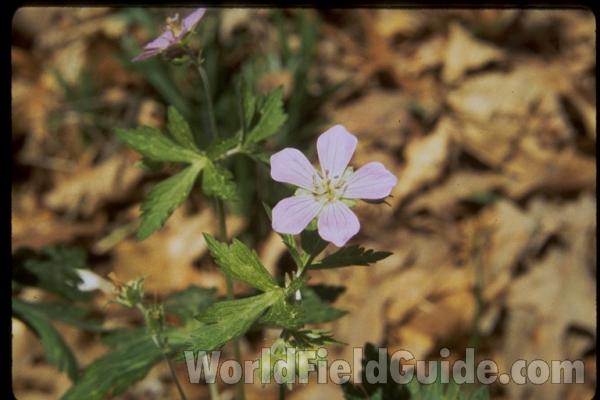SPECIES INFO
Wild crane's bill (Geranium maculatum) is found from Maine west to Ontario and Manitoba, and south to Georgia, Alabama and Nebraska. The large (up to one and a half inches broad) purple flowers help identify this common species.Geranium genus (geranium) is found worldwide in temperate regions. There are about 300 to 400 species of perennial herbs and small shrubs in this genus. Most species have palmately divided leaves. The flowers are in umbel-like heads or solitary. There are 42 species, no natural hybrids, and 17 subspecies now growing in greater North America.
Geranium Family (Geraniaceae) contains about 700-800 species distributed worldwide. This family is found widely in North America and widely in western and southern South America. It appears mostly absent in the Orinoco and Amazon basins. It is found in northern, central, and southern Africa, but is absent in the dry areas in the Sahara area. It is found widely in Eurasia, but appears absent in Malaysia and Indonesia. However, it is found in New Guinea and southern Australia. There are 65 species in three genera now growing in greater North America.
These are herbs with flowers that have five sepals and five petals. Many have taproots. The leaves are alternate with petioles.
Geranium Order (Geraniales) is a large order composed of many different families. Included here are the Geranium, Oxalis, and Citrus groups.
Dicots (Dicotyledoneae Class) are the predominant group of vascular plants on earth. With the exception of the grasses (Monocots) and the Conifers (Gymnosperms), most of the larger plants that one encounters are Dicots. Dicots are characterized by having a seed with two outer shell coverings.
Some of the more primitive Dicots are the typical hardwood trees (oaks, birches, hickories, etc). The more advanced Dicots include many of the Composite (Aster) Family flowers like the Dandelion, Aster, Thistles, and Sunflowers. Although many Monocots reach a very high degree of specialization, most botanists feel that the Dicots represent the most advanced group of plants.
Seed plants (Phylum Embryophyta) are generally grouped into one large phylum containing three major classes: the Gymnosperms, the Monocots, and the Dicots. (Some scientists separate the Gymnosperms into a separate phylum and refer to the remaining plants as flowering plants or Angiospermae.)
For North American counts of the number of species in each genus and family, the primary reference has been John T. Kartesz, author of A Synonymized Checklist of the Vascular Flora of the United States, Canada, and Greenland (1994). The geographical scope of his lists include, as part of greater North America, Hawaii, Alaska, Greenland, Puerto Rico, and the Virgin Islands.
Kartesz lists 21,757 species of vascular plants comprising the ferns, gymnosperms and flowering plants as being found in greater North America (including Alaska, Hawaii, Greenland, Puerto Rico and the Virgin Islands.
There are estimates within the scientific world that about half of the listed North American seed plants were originally native with the balance being comprised of Eurasian and tropical plants that have become established.
Plant kingdom contains a large variety of different organisms including mosses, ferns, and seed plants. Most plants manufacture their energy from sunlight and water. Identification of many species is difficult in that most individual plants have characteristics that have variables based on soil moisture, soil chemistry, and sunlight.
Because of the difficulty in learning and identifying different plant groups, specialists have emerged that study only a limited group of plants. These specialists revise the taxonomy and give us detailed descriptions and ranges of the various species. Their results are published in technical journals and written with highly specialized words that apply to a specific group.
On the other hand, there are the nature publishers. These people and companies undertake the challenging task of trying to provide easy to use pictures and descriptions to identify those species.
